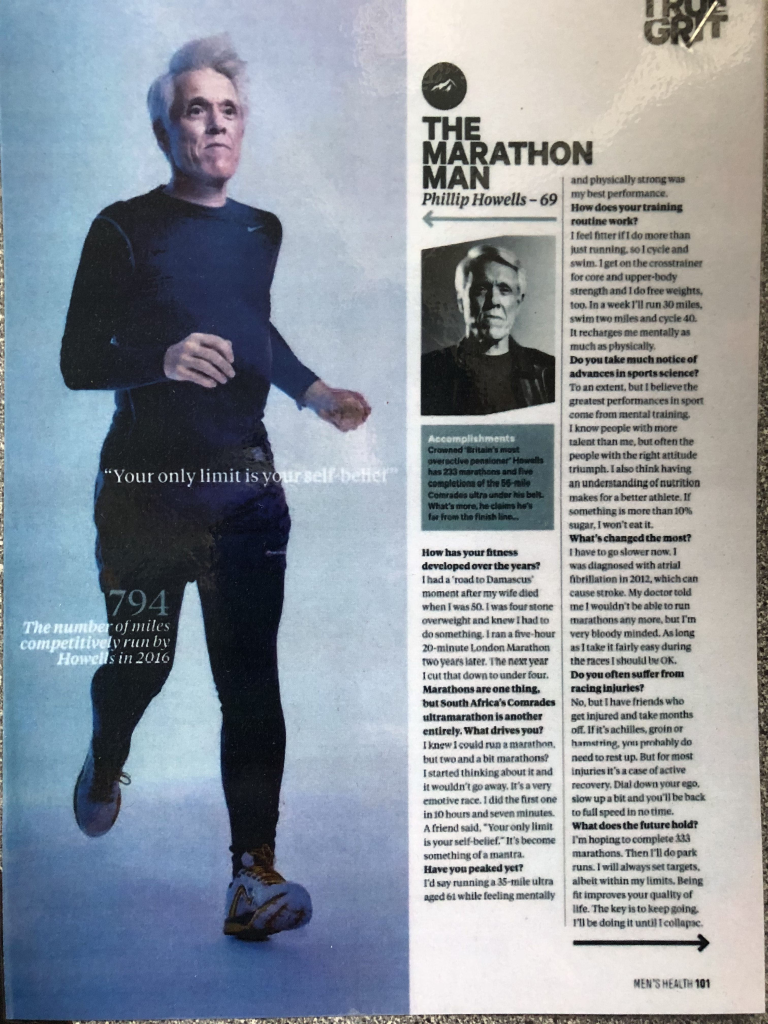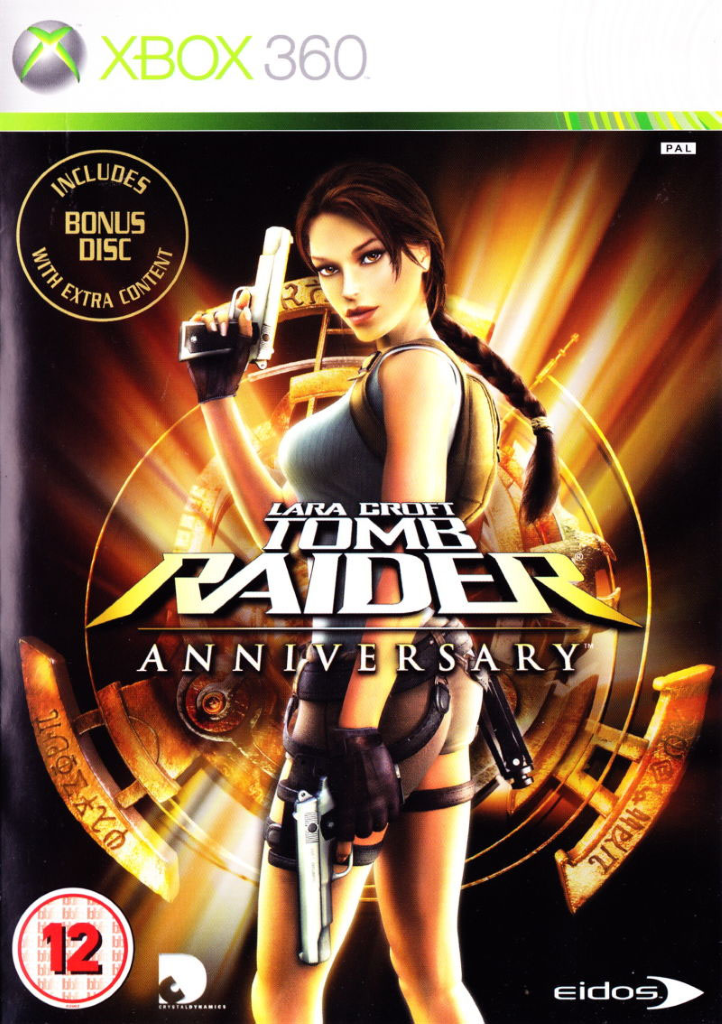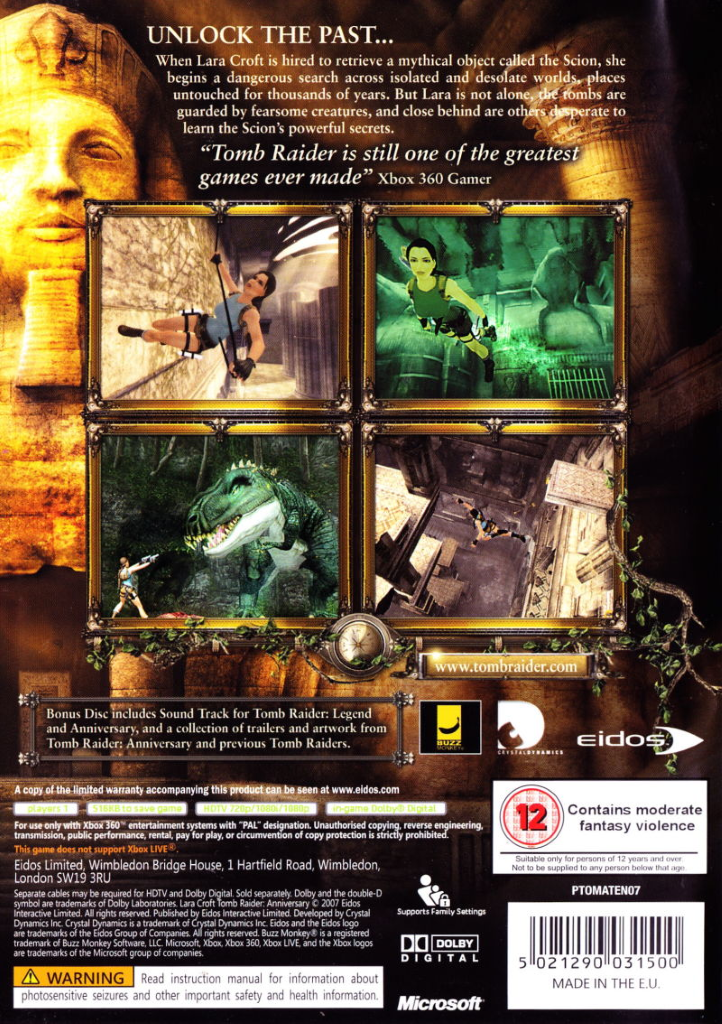I have closely studied the front page, contents page and a double page spread of the Men’s Health magazine and the front and back of the cover sleeve for the popular game, Tomb Raider. In this essay I will explore how gender is represented in magazines and identify features such as the mis-en-scene of the cover images of both these media sources and how the Tomb Raider cover misrepresents the dominant ideology of females. I will also identify where each media source has followed David Gauntlet and his theories of identity. After identifying how gender is represented in these two media sources, I will conclude with how they can make the main images appear either radical or reactionary to modern day life.
To begin with, Men’s Health and Tomb Raider are two sources of media that represent gender very differently. Men’s Health has a target audience of males who are into fitness, however, Tomb Raider is aimed at males, even though the conventions of a male orientated video game are broken by using a female as the protagonist, as explained by one of the creators of Lara Croft, Heather Gibson, “The story goes that within the industry it wasn’t easy to sell a female heroine…Up until then they were quite masculine characters because your main market was men or boys.”. What is similar about these media sources is that they are both aimed at a target audience of young adult men, as Men’s Health only consists of images of men and Tomb Raider has a central image of a beautiful young girl, which attracts males, the target audience, to play the game by using Lara Croft, who in a report conducted by the BBC, was designed to be a “cybersex symbol”, as identified by her hourglass shape body, large breasts and minimal clothing being worn. However, Men’s Health follows the dominant ideology of males and follows the gender stereotype of males being muscular and regularly attending the gym, thus being represented as quite reactionary. However, the cover of Tomb Raider is represented as radical as the main image of Lara Croft goes against the dominant ideology of females, as shown by Lara Croft holding a gun, which appears radical as Lara Croft breaks the belief that men were more self-reliable than females, who were believed they were unable to defend for themselves. According to an article on Lara Croft, “If we’re talking true female empowerment, it’s important that we experience the less-common mother-daughter plot. It is an example of how women can fend for themselves without male reliance. Too often in media we see women pitted against each other, which reduces the common bond and power that women share. LEGEND breaks this trend – and proves a two-woman plot can break records”. Therefore, this highlights that this is a radical text as Lara Crofts role and personality contradicts the dominant signifies which emphasizes male independence in comparison to females, whereas the Men’s Health ca be seen as reactionary due to the male protagonist, who appears on the font cover and contents page, following the dominant ideology of males.
The Men’s Health magazine cover uses lots of blue and blacks, as they are colours stereo typically associated with males, however, the Tomb Raider game cover goes against the gender stereotype of females, as the cover uses oranges, blacks and greens, colours that associate with fire and adventure, which goes against the ideology of females. The mis-en-scene of the Men’s Health magazine follows the dominant ideology of males, as signified by the image of the interviewee running, which fits in with the ideology of the magazine as it is based around sports. However, the mis-en-scene used on the game cover of Tomb Raider goes against the dominant ideology of females because Lara Croft is holding a gun in front of a ring of fire, which presents her as radical, rather than reactionary. The settings of both the media sources counteract against each other because Men’s Health uses a very soft background against their images, which could be misinterpreted and seem as if males are being represented as quite feminine. Alternatively, Tomb Raider does the opposite of Men’s Health, by representing females as quite masculine and against the dominant ideology of females, as suggested by putting the central image against a dark colour and fire, which typically signify danger, thus identifying that Lara Croft goes against the regime of females.
The connotations and denotations of both these sources of media represent gender very differently. For example, the ruling of thirds on the Tomb Raider front cover brings our attention to the centre “square”, which happens to be Lara’s Croft’s breasts, thus suggesting that the intentions of the game cover it to place attention on her large breasts, as she was originally created to be a cybersex symbol for games aimed at young males, who themselves may be looking for love, thus representing Lara Croft as beautiful and a source of escapism for males who have no girlfriends and may feel lonely. The connotations and denotations of the Men’s Health magazine counteract the ideas and radical message that is portrayed through the Lara Croft game sleeve. For example, the Men’s Health contents page and front cover feature a skinny, muscular male, and is positioned so that the iconic sign of Vin Diesel is surrounded by plugs such as “Blast Body Fat” and “Lose 8KGs fast”, thus suggesting that the consumer should be more like Vin Diesel, which then links back to David Gauntlet’s theory of negotiated identity, as the consumer may attend the gym and be muscular, however they question whether they are doing the right thing as the magazine is telling them to be more like Vin Diesel.
Finally, using David Gauntlet’s theories of identity, the font and back cover of the game sleeve for Tomb Raider has made Lara Croft be represented as having a negotiated identity because she follows the dominant ideology of males, as shown by her going against the female regime by holding a gun, however, she also follows the dominant ideology of females by being positioned sideways on to show the feminine features of her bottom and large breasts, as well as minimal clothing to reveal her and make her come across as a “cybersex symbol” for males who play the game. This negotiated identity of Lara Croft also creates a constructed identity of Lara Croft as a more masculine figure, because her positioning and characteristics within the game make her come across as more masculine, thus changing the player’s beliefs about females, due to the creators of the game intentionally using a female protagonist that goes against the dominant ideology and expectations of the female.
To conclude, Men’s Health and Tomb Raider contrast in the representation of gender. This is shown by the mis-en-scene of both the central image of the products, which is reactionary as they follow the dominant ideology of what females and men aim to look like. The colouring of the media sources also represent gender very differently as Men’s Health uses colours that are stereo-typically associated with females; however, Tomb Raider goes against this by using colours associated with danger, thus going against the dominant ideology of females. The setting of the media sources also represent gender very differently, as Men’s Health uses a soft background, which is a bit misleading as it could appear quite feminine. Whereas, Lara Croft on the Tomb Raider game cover uses fire and an Egyptian style background, which also misrepresents females as it could appear quite masculine, which then presents Lara Croft as being quite masculine and a figure who goes against the dominant ideology of females in media.















